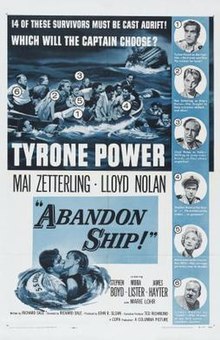
In Nacht und Eis, also called Der Untergang der Titanic and Shipwrecked in Icebergs in the US, is a 1912 German silent adventure-disaster drama film about the sinking of RMS Titanic. This is the second surviving film about the Titanic disaster.
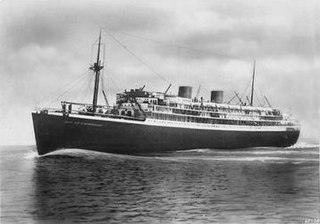
TSMS Lakonia was an ocean liner that was launched in 1929 for Netherland Line as the ocean liner Johan van Oldenbarnevelt. In 1962 she became the Greek Line cruise ship TSMS Lakonia. On 22 December 1963 she caught fire at sea and on 29 December she sank. 128 people were killed in the disaster.

Robert Hichens was a British sailor who was part of the deck crew on board the RMS Titanic when she sank on her maiden voyage on 15 April 1912. He was one of seven quartermasters on board the vessel and was at the ship's wheel when the Titanic struck the iceberg. He was in charge of Lifeboat #6, where he refused to return to rescue people from the water due to fear of the boat being sucked into the ocean with the huge suction created by Titanic, or swamped by other floating passengers. According to several accounts of those on the boat, including Margaret Brown, who argued with him throughout the early morning, Lifeboat 6 did not return to save other passengers from the waters. In 1906, he married Florence Mortimore in Devon, England; when he registered for duty aboard the Titanic, his listed address was in Southampton, where he lived with his wife and two children.
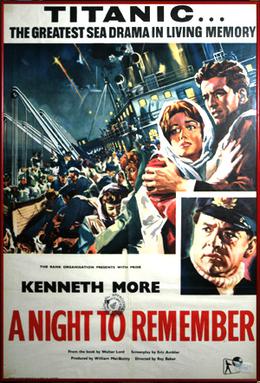
A Night to Remember is a 1958 British historical disaster docudrama film based on the eponymous 1955 book by Walter Lord. The film and book recount the final night of RMS Titanic, which sank on her maiden voyage after she struck an iceberg in 1912. Adapted by Eric Ambler and directed by Roy Ward Baker, the film stars Kenneth More as the ship's Second Officer Charles Lightoller and features Michael Goodliffe, Laurence Naismith, Kenneth Griffith, David McCallum and Tucker McGuire. It was filmed in the United Kingdom and tells the story of the sinking, portraying the main incidents and players in a documentary-style fashion with considerable attention to detail. The production team, supervised by producer William MacQuitty used blueprints of the ship to create authentic sets, while Fourth Officer Joseph Boxhall and ex-Cunard Commodore Harry Grattidge worked as technical advisors on the film. Its estimated budget of up to £600,000 was exceptional and made it the most expensive film ever made in Britain up to that time. The film's score was written by William Alwyn.

Archibald Gracie IV was an American writer, soldier, amateur historian, real estate investor, and survivor of the sinking of the Titanic. Gracie survived the sinking by climbing aboard an overturned collapsible lifeboat and wrote a popular book about the disaster. He never recovered from his ordeal and died less than eight months after the sinking, becoming the first adult survivor to die.

Edith Haisman was a South African-British woman who was one of the last remaining and oldest survivors of the sinking of RMS Titanic in April 1912. She was the last survivor born in the 19th century, and therefore the last survivor who was a teenager at the time of the sinking, although seven younger survivors outlived her.

RMS Titanic sank in the early morning hours of 15 April 1912 in the North Atlantic Ocean, four days into her maiden voyage from Southampton to New York City. The largest ocean liner in service at the time, Titanic had an estimated 2,224 people on board when she struck an iceberg at around 23:40 on Sunday, 14 April 1912. Her sinking two hours and forty minutes later at 02:20 ship's time on Monday, 15 April, resulted in the deaths of more than 1,500 people, making it one of the deadliest peacetime maritime disasters in history.
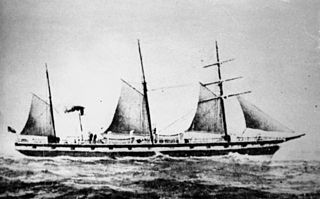
SS Gothenburg was an iron-hulled sail- and steamship that was built in England in 1854 and sailed between England and Sweden until 1862. She then moved to Australia, where she operated across the Tasman Sea to and from New Zealand until 1873, when she was rebuilt. After her rebuild, she operated in the Australian coastal trade.
SS Jeddah was a British-flagged Singaporean-owned passenger steamship. It was built in 1872 in Dumbarton, Great Britain, especially for the Hajj pilgrim trade, and was owned by Singapore-based merchant Syed Mahomed Alsagoff. In 1880, the officers onboard the Jeddah abandoned it when it listed and appeared to be sinking, leaving more than 700 passengers aboard. The event later inspired the plot of Joseph Conrad's novel Lord Jim. The vessel was retrieved and continued to sail, later being renamed Diamond.
William Brown was an American ship that sank in 1841, taking with her 31 passengers. The survivors took to two boats, which later separated to increase their chances of being found. Nine crewmen and 32 passengers occupied the overloaded longboat. At the instigation of the first mate, who was placed in charge by the captain, some of the crew, Alexander Holmes among them, forced 12 of the adult male passengers out of the boat. In the case of United States v. Holmes, Holmes – the only crewman who could be found – was charged with murder and convicted of manslaughter for his actions.

SS London was a British steamship that sank in the Bay of Biscay on 11 January 1866. The ship was travelling from Gravesend, England to Melbourne, Australia, when she began taking in water on 10 January, with 239 persons aboard. The ship was overloaded with cargo, and thus unseaworthy, and only 19 survivors were able to escape the foundering ship by lifeboat, leaving a death toll of 220.

The rescue of the SS Danmark began on April 6, 1889, when the cargo ship, SS Missouri, came to the rescue of the sinking SS Danmark and saved all of the passengers and crew of the Danmark.

Titanic II is a 2010 American drama disaster film written, directed by and starring Shane Van Dyke and distributed by The Asylum. Despite the title, it is not a sequel to the 1997 critically acclaimed film, but is a mockbuster of it. It was released direct-to-TV in Australia on 7 August 2010. It premiered on Syfy, on Sky in the UK and Ireland on 9 August. It was released on 25 August in the United States to critically negative response, though the film's ensemble cast performances, particularly that of Bruce Davison, received praise.

Titanic Lifeboat No. 1 was a lifeboat from the steamship Titanic. It was the fifth boat launched to sea, over an hour after the liner collided with an iceberg and began sinking on 14 April 1912. With a capacity of 40 people, it was launched with only 12 aboard, the fewest to escape in any one boat that night.

Lifeboats played a crucial role during the sinking of the Titanic on 14–15 April 1912. The ship had 20 lifeboats that, in total, could accommodate 1,178 people, a little over half of the 2,209 on board the night it sank.

SS Berlin was a steel ship, which was owned by the Great Eastern Railway and built for use on their ferry service from Harwich and the Hook of Holland, which the company had initiated in 1893.

RNLB Foresters Centenary is a retired Liverpool-class lifeboat of the Royal National Lifeboat Institution (RNLI), stationed in the English coastal town of Sheringham in the county of Norfolk in the United Kingdom. The lifeboat was on station for 25 years between 1936 and 1961 when she was sold. She has been restored to her original condition and is exhibited in Sheringham Museum.
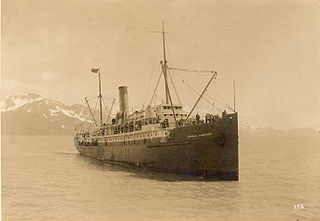
The SS Admiral Sampson was a U.S.-flagged cargo and passenger steamship that served three owners between 1898 and 1914, when it was rammed by a Canadian passenger liner and sank in Puget Sound. Following its sinking off Point No Point, the Admiral Sampson has become a notable scuba diving destination for advanced recreational divers certified to use rebreathing equipment.

Cyclone is a 1978 Mexican survival horror film directed by René Cardona Jr. and starring Arthur Kennedy, Carroll Baker, and Lionel Stander. The plot follows a group of passengers from a crashed airplane who find refuge on a small tour boat in the ocean, and who eventually resort to cannibalism for survival. The film is purportedly based in part on Alfred Hitchcock's Lifeboat (1944).

SS Aden was a P&O cargo ship that was built in England in 1892. She was wrecked in the Indian Ocean in 1897, with the loss of 78 lives. She was the second of three P&O steamships to be named after the British Aden Colony. The first was launched in 1856 as Delta, completed as Aden, and hulked in 1875. The third was launched in 1946 as Somerset, renamed Aden in 1954, and scrapped in 1967.
